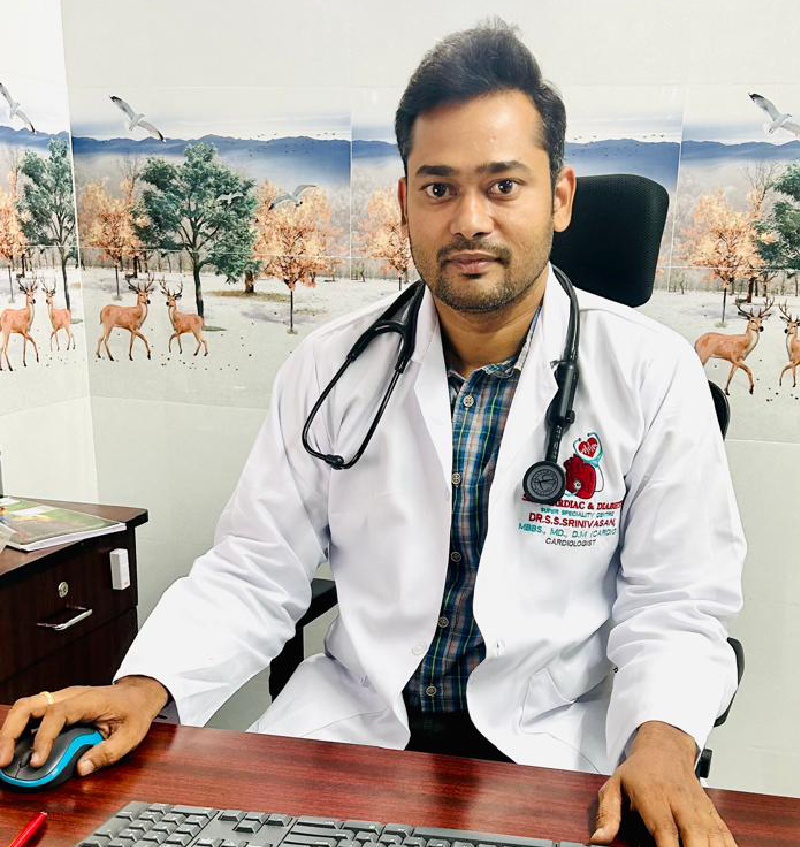It play a critical role in guiding catheter-based interventions, such as percutaneous coronary interventions (PCI) for stent placements or closing holes in the heart like atrial septal defects. They also monitor heart function during the implantation of devices like cardiac resynchronization therapy (CRT) or pacemakers, ensuring proper placement and optimal device performance, ultimately improving surgical outcomes and patient recovery.

Dr. Srinivasan
Interventional Cardiologist
Personal Details
- Experience : 14 Years
- 7010998944 ,8012375085
- dr_srini@ymail.com
- 9, Big St, Pavazhakundur, Tiruvannamalai, Tamil Nadu 606601
Skills
Fluoroscopy and Imaging Expertise
0%
Image Acquisition
0%
Quantitative Assessment
0%
Data Interpretation
0%
Echocardiogram
An echocardiogram is a non-invasive medical test that uses sound waves to produce detailed images of the heart. It is commonly referred to as an ultrasound of the heart and is used to assess the structure and function of the heart, including the heart chambers, valves, and blood flow. During the test, a device called a transducer emits high-frequency sound waves, which bounce off the heart’s structures and create echoes. These echoes are then captured by the transducer and converted into real-time images displayed on a monitor. Echocardiograms are used to diagnose and monitor various heart conditions, such as heart valve diseases, congenital heart defects, heart failure, and cardiomyopathy.
Treatments in Echocardiogram
An echocardiogram itself is a diagnostic tool rather than a treatment, but it plays a key role in guiding treatment decisions for various heart conditions. Depending on the findings, treatments may include medications such as diuretics, ACE inhibitors, or beta-blockers to manage heart failure, hypertension, or arrhythmias. For structural heart issues like valve diseases, surgical interventions or minimally invasive procedures like valve repair or replacement may be recommended. If blood flow abnormalities or clots are detected, treatments like blood thinners or procedures to remove clots may be necessary. In cases of congenital heart defects, surgical correction or catheter-based interventions might be required. Lifestyle modifications, including diet and exercise, are often advised to manage underlying conditions. Regular follow-up echocardiograms may be used to assess treatment effectiveness and monitor the heart’s function over time.
Indications and Working of a Pacemaker
Echocardiograms are essential tools in guiding surgical and interventional cardiac procedures, providing real-time imaging of the heart’s structure and function. During surgeries like heart valve repair or replacement, echocardiograms help the surgical team assess the severity of valve dysfunction, monitor blood flow, and ensure the procedure’s success. Transesophageal echocardiography (TEE), where a probe is inserted into the esophagus, provides close-up images.

Help & Support
Quick Links
Working Hours
- Mon - Sat : Every 4.00 Pm - 9.00 Pm Sunday - Closed
Copyright ©️ 2024 Srini Cardiac & Diabetic Super SpecialityCentre. All Rights Reserved Designed by
Wink Dezign
